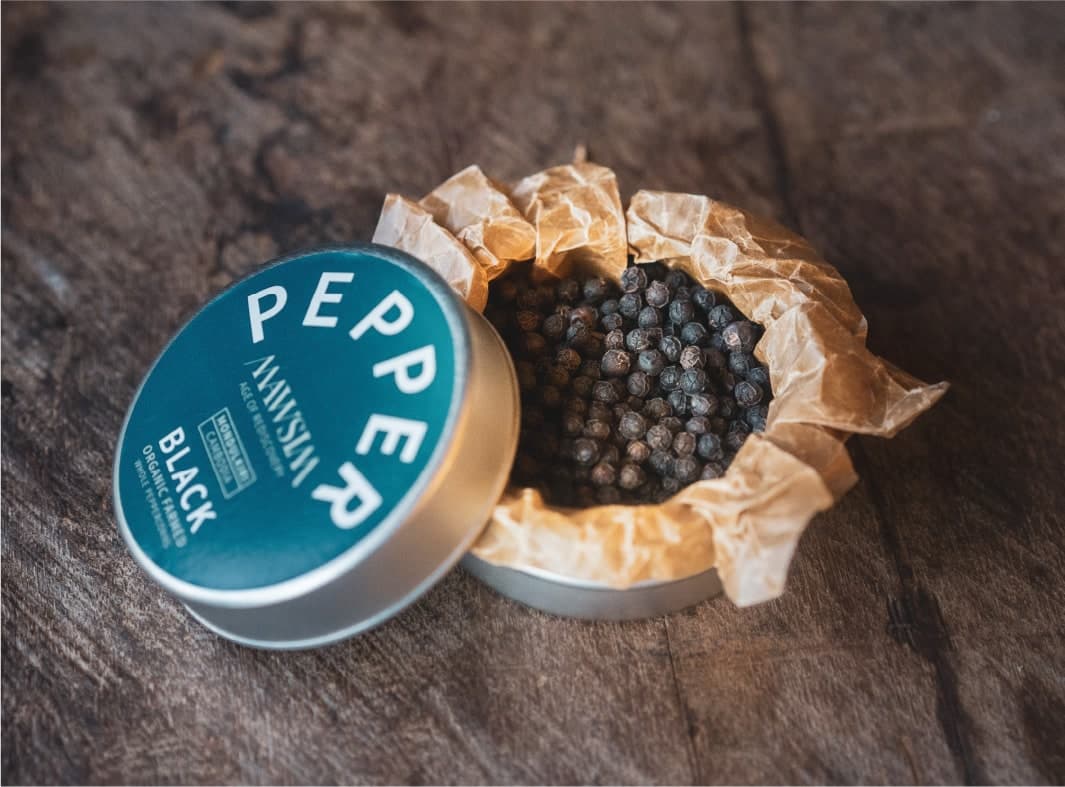ABOUT US
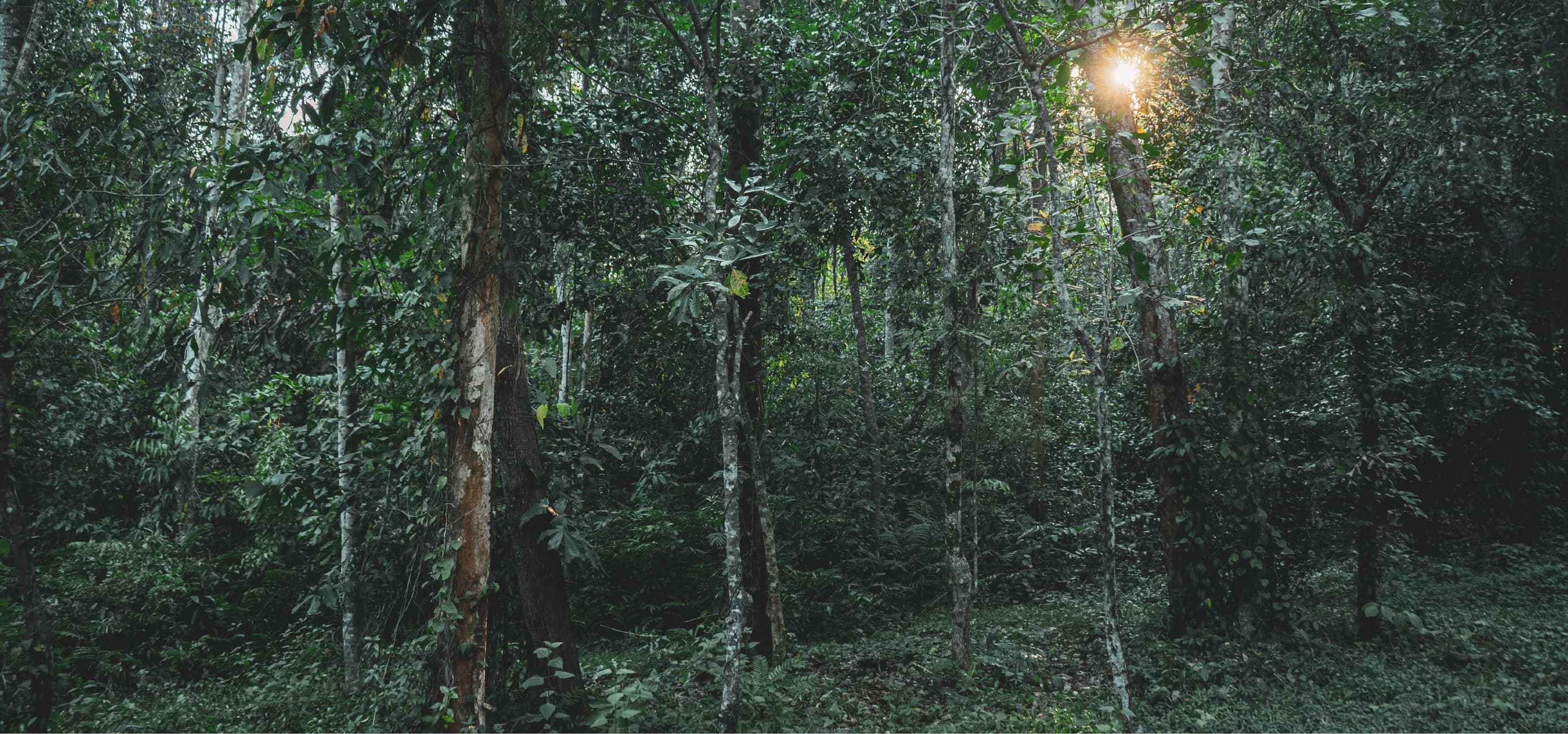
Age of Rediscovery
The new continent and the black pepper plant have been by the side of someone from the beginning.
Let us call it “rediscovery” to realize a new value in what already exists.
Now, the curtain rises on the age of rediscovery.
“MAWSIM” means a season in Arabic and is the word from which “monsoon” originated.
It is named after the wind that carried many galleons in search of spices
during the Age of Discovery and delivered Dutch gin to Japan during the era of its national isolation.
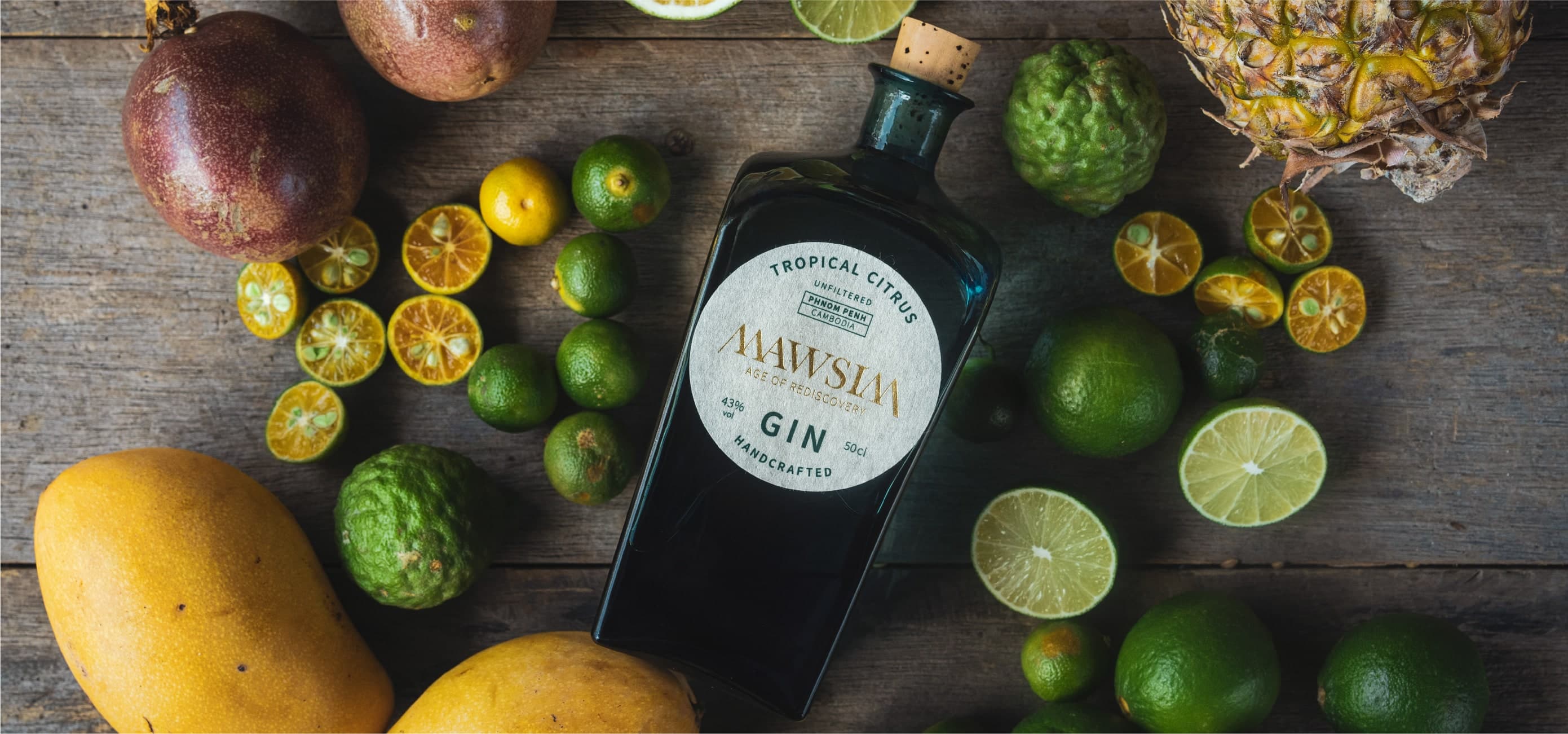
-
MAWISIM GIN
Spirit Freely Traveling the WorldGin, which was born in the Netherlands, became popular in England, and traveled around the world with sailors from both maritime nations, reached the isolated country in the Far East in the 17th century. And the golden spice brought back from tropical Asia by Anglo-Dutch merchant ships led to imperialism and the evolution of gin.
However, malaria and scurvy were serious threats to the Imperial Navy of the Age of Sail. The gin & tonic and gimlet were created as medicine against these, and since then, they have been drunk on all oceans and ports of call and have spread around the world.
We will redefine such a gin journey from a different perspective: the origin of the key botanicals should be the new port of departure. This is why MAWSIM distills its gin in Cambodia, a tropical Asian country that is a treasure trove of spices and herbs.
Verdant, raw peppercorns, which are available only locally. Cardamom, which grows wild in the mountains. Fresh and juicy citrus fruits, such as lime and makrut lime. And the fever tree, which was transplanted in the 19th century, whose bark is the raw material for tonic water, an anti-malarial drug. —MAWISM pieces together in the context of rediscovery the good things that were once exploited in the name of “discovery,” dresses them in new and nostalgic clothes, and lets them travel the world.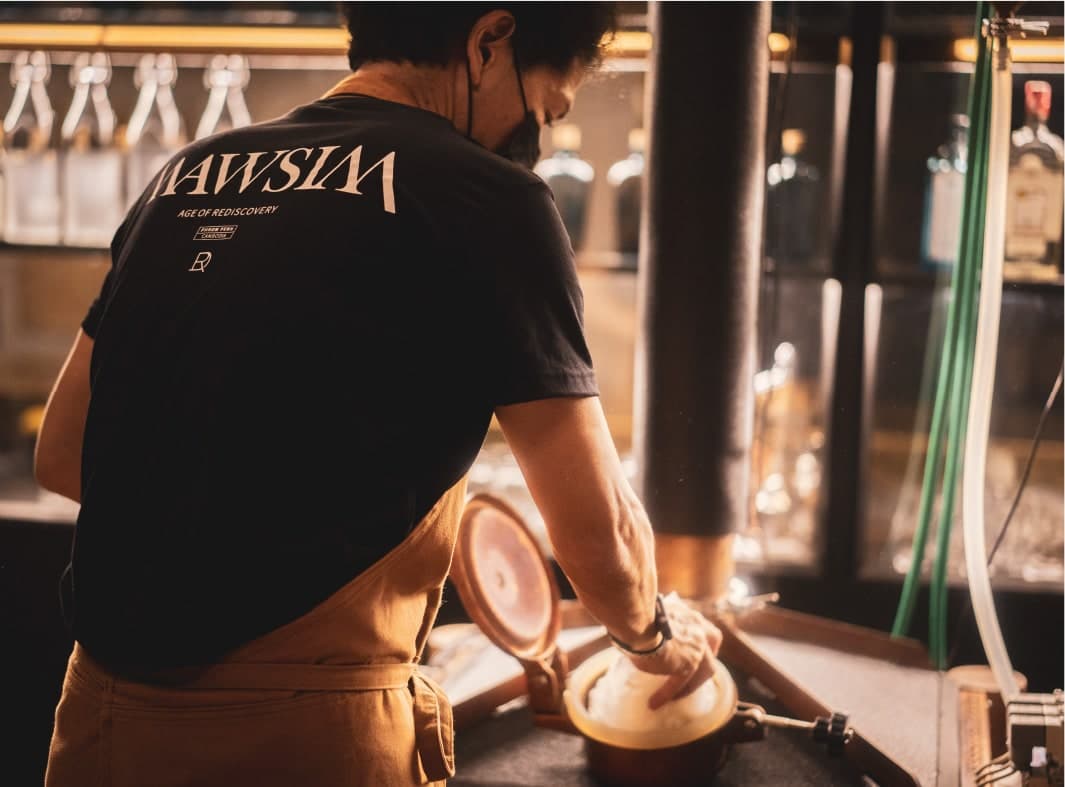
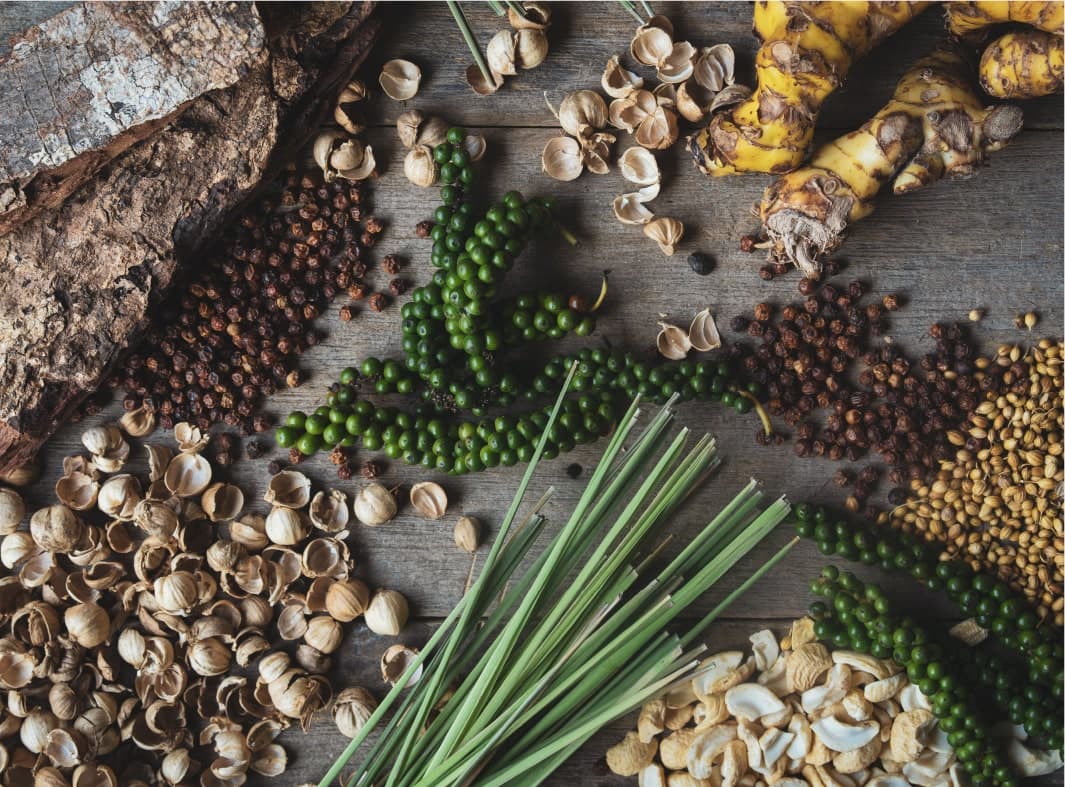
-
Kelderfles
The Dutch word “kelderfles” means a case bottle originating from the “case” in which bottles were packed and transported by the dozen. Kelderfles has a square vertical surface and can be stored in the cases without gaps, which makes it highly efficient for transportation and eliminates the need for a lot of cushioning materials, making it an energy-saving bottle of the Middle Ages.
From the 1570s onward, it was blown as a common utility bottle in the Netherlands, Belgium, and North Germany, and with the worldwide increase of gin consumption from the 1770s onward, it changed its shape from vertical to tapered. The vertical bottles tended to stick when withdrawn from the mold, making them unsuitable for mass production.
MAWSIM’s gin bottle is a rebuilt of this kelderfles. It is molded from scratch and manufactured semi-artificially in a factory in downtown Tokyo.
It’s a special craft bottle enough to fill a special craft gin with special colors that evoke unknown jungles and medieval seas.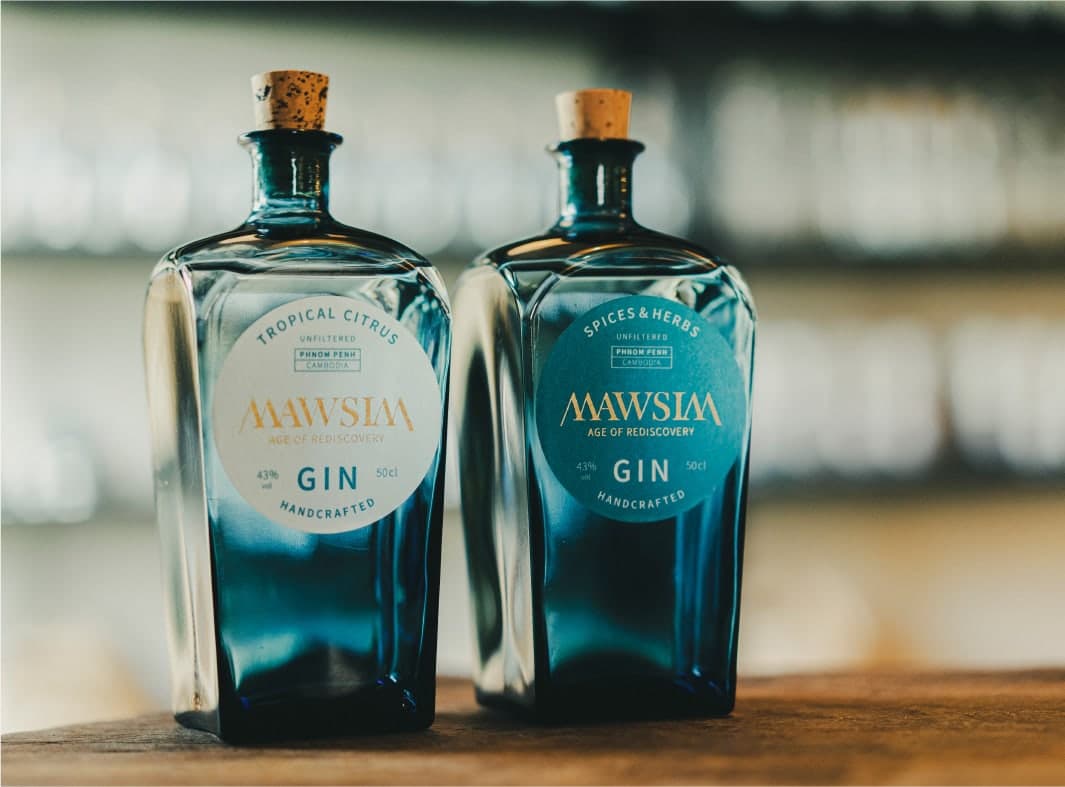

-
MAWSIM PEPPER
Pepper: An Exciting FruitThis king of spices, which has been exciting our appetites all over the world for centuries, is the fruit of a vine plant that grows only in a few tropical monsoon forests.
Mondulkiri, where we sought the ultimate pepper, in eastern Cambodia, means “where we meet the mountains” in Khmer and is a rare highland area in this country, where most of the land is less than 100 meters above sea level. The peppercorns produced here are richer in flesh and more fragrant than any we have ever encountered. This is because the cold nights, which are not typical of the tropics, inhibit the plants’ respiration (i.e., the breakdown of carbohydrates) and keep the nutrients that go into the fruit intact. The abundance of water resources, well-drained soil, long hours of daylight, and soothing fog also contribute to the pepper’s flavor.
MAWSIM’s pepper is grown 100% organically in Mondulkiri, surrounded by nature, on a contract farm that has been free of pesticides and chemical fertilizers, and the entire process from harvest to shipment is done by hand. The farm is run by Cambodians, who are compensated for their thorough quality control under fair and direct trade.

-
Our Spice Box
MAWSIM’s spice box is an improvisation of a traditional tea canister made in Kyoto, Japan. With their tight-sliding opening and closing feel, the exquisite tin cans are ideal for airtight storage of valuable dried plants, such as spices and tea leaves. Therefore, MAWSIM does not choose vacuum packaging because the time after consumers open their spice packages is much longer than the time from spices being vacuum-packed to being delivered. Above all, we do not want to use plastics. This is to avoid contaminating the soil and water that will grow delicious spices for years to come.
Today, all kinds of spices are sold in containers that sacrifice light-shielding performance for display effect, but at MAWSIM, we believe that valuable spices should be treated like expensive tea leaves. As e-commerce is our main sales channel, it was a prerequisite that the physical contents are invisible.
